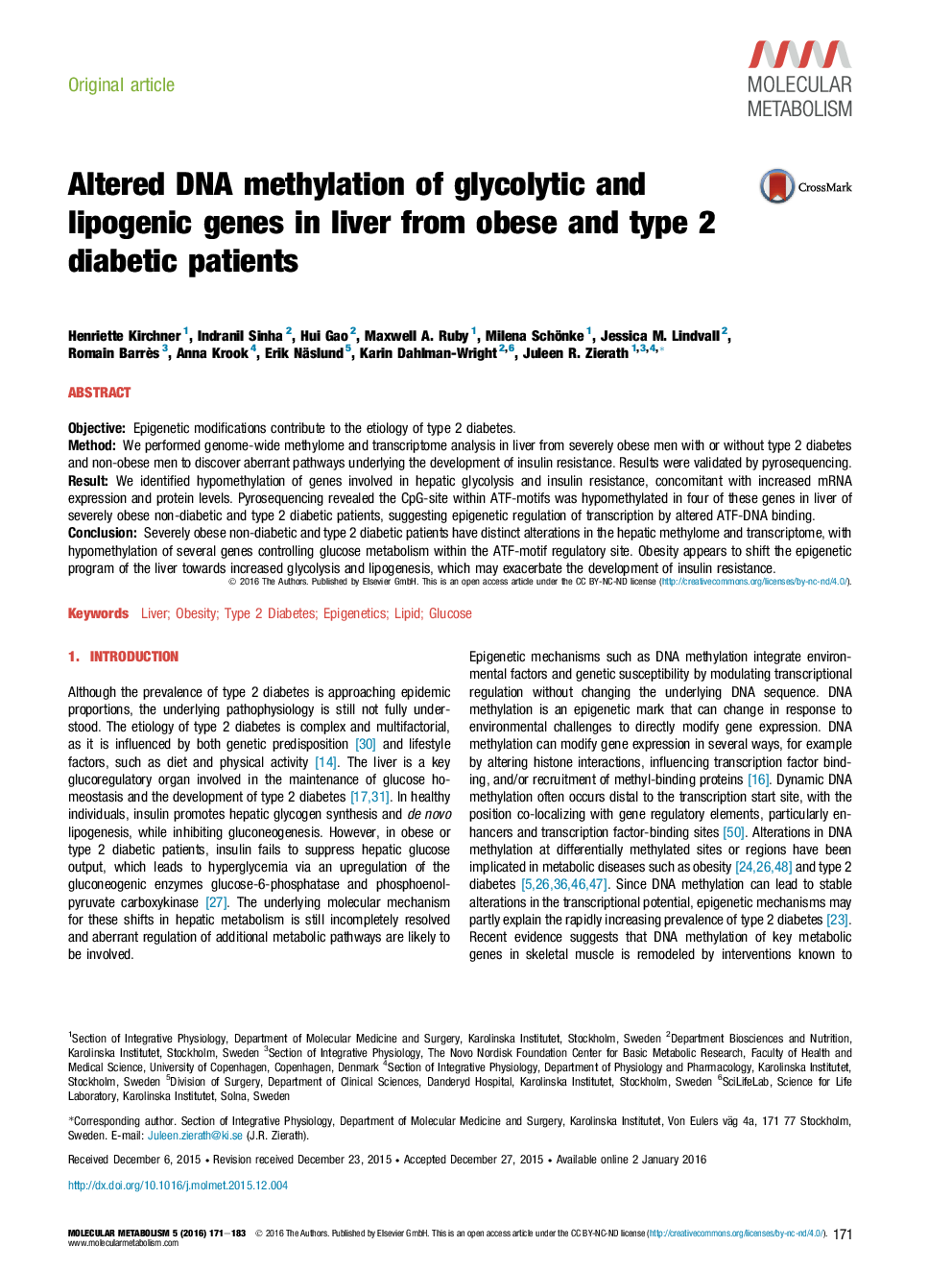| Article ID | Journal | Published Year | Pages | File Type |
|---|---|---|---|---|
| 3001582 | Molecular Metabolism | 2016 | 13 Pages |
•Omic analysis in human liver reveals aberrant pathways in obesity and diabetes.•Genes regulating glycolysis and de novo lipogenesis were hypomethylated in obesity.•DNA methylation of ATF binding elements alters hepatic gene expression.•Obesity shifts the epigenome to increase lipid production and insulin resistance.
ObjectiveEpigenetic modifications contribute to the etiology of type 2 diabetes.MethodWe performed genome-wide methylome and transcriptome analysis in liver from severely obese men with or without type 2 diabetes and non-obese men to discover aberrant pathways underlying the development of insulin resistance. Results were validated by pyrosequencing.ResultWe identified hypomethylation of genes involved in hepatic glycolysis and insulin resistance, concomitant with increased mRNA expression and protein levels. Pyrosequencing revealed the CpG-site within ATF-motifs was hypomethylated in four of these genes in liver of severely obese non-diabetic and type 2 diabetic patients, suggesting epigenetic regulation of transcription by altered ATF-DNA binding.ConclusionSeverely obese non-diabetic and type 2 diabetic patients have distinct alterations in the hepatic methylome and transcriptome, with hypomethylation of several genes controlling glucose metabolism within the ATF-motif regulatory site. Obesity appears to shift the epigenetic program of the liver towards increased glycolysis and lipogenesis, which may exacerbate the development of insulin resistance.
